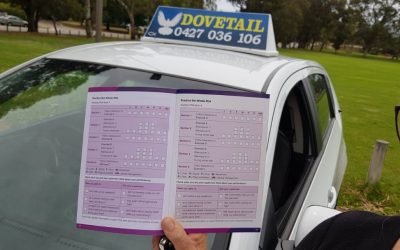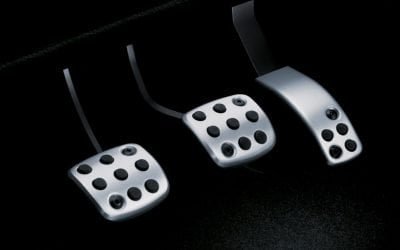Are you ready to take the wheel and experience the thrill of driving a manual car?
Mastering the art of manual car driving is not only a practical skill but also an exhilarating experience that puts you in complete control of the road.
Therefore, I will teach you In this step-by-step guide the secrets to smoothly shifting gears, mastering clutch control, and confidently navigating the road.
It doesn’t matter if you’re a beginner or looking to brush up on your skills; this comprehensive guide will provide you with all the knowledge you need to become a proficient manual car driver: From understanding the mechanics of a manual transmission to perfecting your clutch coordination, I will cover it all.
So, buckle up and get ready to embark on a journey toward becoming a skilled manual car driver, where every shift will be a satisfying symphony of power and control.
Advantages of Manual Car Driving
 Driving a manual car offers several advantages, making it an appealing choice for many enthusiasts.
Driving a manual car offers several advantages, making it an appealing choice for many enthusiasts.
Firstly, manual cars are more fuel-efficient than their automatic counterparts. Manual car drivers can optimise their fuel consumption by controlling the gears and engine speed.
Additionally, manual cars provide a more engaging driving experience and allow drivers to feel a “deeper connection” with the road and the vehicle itself. The ability to downshift and upshift gives the driver greater control over the car, especially in challenging driving conditions.
And lastly, learning to drive a manual car opens up more opportunities, as many countries still predominantly use manual transmissions, and being proficient in driving one can be helpful during travel or when renting a car abroad.
Understanding the Manual Car Components
Before diving into the practical aspects of manual car driving, it’s crucial to understand the critical components of a manual car. The transmission is the heart of a manual vehicle, which transfers power from the engine to the wheels.
Manual transmissions have a gear shifter, a clutch pedal, and a clutch. The gear shifter allows the driver to select the desired gear, while the clutch pedal engages and disengages the clutch, which connects or disconnects the engine from the transmission.
Familiarising yourself with these components will provide a solid foundation for mastering manual car driving.
Getting Familiar with the Clutch
The clutch is one of the most critical components of a manual car, as it allows for smooth gear changes and enables the car to come to a stop without stalling the engine. Understanding how to operate the clutch is essential for mastering manual car driving.
To use the clutch, the driver must press the clutch pedal all the way to the floor before shifting gears. Releasing the clutch pedal slowly and smoothly while simultaneously applying pressure to the accelerator allows for a seamless transition between gears.
It’s essential to practice finding the “bite point” of the clutch, which is the point at which the clutch begins to engage, as this will help you achieve smoother gear changes.
Starting the Car and Shifting Gears
 Now that you’re familiar with the clutch, it’s time to start the car and get moving.
Now that you’re familiar with the clutch, it’s time to start the car and get moving.
To start a manual car, ensure that the car is in neutral, press the clutch pedal, and turn the key in the ignition. Once the car is running, you can begin shifting gears.
The gear pattern typically follows an “H” shape, with the neutral position in the middle. Shifting gears requires coordination between the clutch, gear shifter, and accelerator.
As you gain more experience, you’ll learn to match engine speed with the appropriate gear for smoother shifts. Remember to release the clutch pedal gradually when shifting gears to avoid jerky movements and unnecessary wear on the clutch.
Mastering the Art of Smooth Acceleration and Deceleration
Smooth acceleration and deceleration are fundamental skills in manual car driving.
When accelerating, smoothly release the clutch pedal while gradually applying pressure to the accelerator. As you gain speed, shift gears using the appropriate gear ratios. Press the clutch pedal and shift to a lower gear when decelerating as the engine speed drops.
This technique, known as engine braking, allows for better control and reduces wear on the brakes.
Practising smooth acceleration and deceleration will improve your driving experience and contribute to better fuel efficiency and increased safety on the road.
Techniques for Uphill and Downhill Driving
Driving on hilly terrain presents unique challenges that require additional skills. The residents of the hilly eastern part of Metropolitan Perth are very much acquainted with this dilemma.
When driving uphill, start by releasing the clutch pedal slowly while simultaneously applying pressure to the accelerator. This technique prevents the car from rolling backward while allowing the engine to build enough power to climb the hill. If needed, shift to a lower gear to maintain momentum.
Downhill driving requires careful control to avoid excessive speed. Use engine braking by downshifting to a lower gear to control your speed and reduce the strain on your brakes.
And always remember to maintain a safe following distance from vehicles in front of you and anticipate any upcoming changes in the road gradient.
Navigating Through Traffic and Intersections
Driving a manual car in traffic can be challenging, but with the proper techniques, you can navigate through congested areas smoothly.
Most importantly, always maintain a safe following distance from the vehicle ahead to allow for ample reaction time.
When coming to a stop, use the clutch to disengage the engine from the transmission, preventing the car from stalling. As traffic starts moving again, smoothly release the clutch pedal while gradually applying pressure to the accelerator to avoid jerky movements.
When approaching intersections, plan your gear changes in advance to ensure a smooth transition.
By practising these techniques, you’ll be able to navigate through traffic and intersections with confidence.
Advanced Manual Driving Techniques
Once you have mastered the basics of manual car driving, you can explore advanced techniques to enhance your skills further.
One such technique is rev-matching, which involves matching the engine speed to the gear you’re shifting into for smoother gear changes. This technique reduces wear on the clutch and minimises the impact on the car’s balance.
Another advanced technique is heel-toe downshifting, allowing seamless downshifts while braking. This technique involves using the heel of your right foot to blip the throttle while simultaneously braking with your toe.
These advanced techniques require practice and finesse but can significantly improve your driving experience.
Troubleshooting Common Manual Car Driving Issues
 Even experienced manual car drivers may encounter common issues from time to time.
Even experienced manual car drivers may encounter common issues from time to time.
One common problem is stalling the engine when starting from a stop. This can be caused by releasing the clutch pedal too quickly or not giving enough throttle. To prevent stalling, practice finding the “bite point” of the clutch and gradually release the clutch pedal while applying enough throttle.
Another common issue is grinding gears when shifting. This can be caused by not fully engaging the clutch or shifting without correctly matching the engine speed. To avoid grinding gears, fully depress the clutch pedal before shifting and match the engine speed with the appropriate gear.
By understanding and troubleshooting these common issues, you can overcome them and become a more confident manual car driver.
Conclusion and Final Tips for Mastering Manual Car Driving
Congratulations!
You have successfully learned the art of manual car driving.
Remember, mastering manual car driving takes practice and patience. Be sure to practice in a safe environment before venturing out into busy streets.
Each car may have slightly different characteristics, so take the time to familiarise yourself with the specific vehicle you will be driving.
Always be mindful of your surroundings, follow traffic laws, and maintain a defensive driving mindset. Lastly, don’t be discouraged by occasional mistakes.
Embrace the learning process, and with time, you’ll become a skilled manual car driver who can effortlessly navigate any road. So, buckle up, enjoy the journey, and let the symphony of power and control guide you towards the thrilling world of manual car driving.
And if you are lost in your learning manual car driving on your own, you can always book manual car driving lessons with a professional driving instructor.






Recent Comments